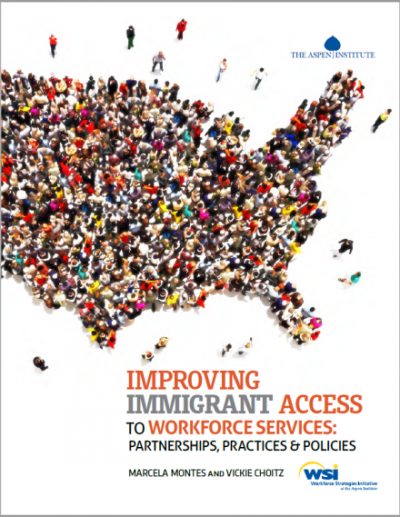Important Intersection
Partnerships between immigrant-serving organizations and workforce development organizations are important to meet the skill and career-advancement needs of the immigrant population.

This report presents the challenges and shares actionable ideas on how the immigrant-serving and workforce development fields could partner to improve policies and practices connecting immigrants to skill-building and career-advancement opportunities. Immigrants and their families make up 13% of the overall population in the United States and 16% of the labor force. However, immigrants are much more likely than the native population to live in poverty and be underserved by our public workforce system.
The research, conducted by the Aspen Institute’s Workforce Strategies Initiative, helps us understand how workforce- and immigrant-focused organizations intersect and could work together. While forming robust partnerships is still in the preliminary stages, a few strong examples of such partnerships exist, and more are emerging with various modest investments. The report aims to contribute to the emerging national conversation about these issues.
Encouraging deeper engagement between immigrant-serving organizations and workforce development organizations, leveraging local and state policies and investing in peer learning and documentation of promising practices could strengthen partnerships between the two fields.
We hope you'll find value in this report. We’d love to get a little information from you, which we'll use to notify you about relevant new resources.